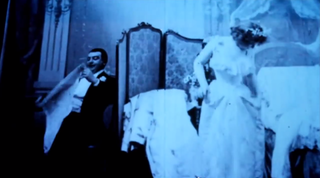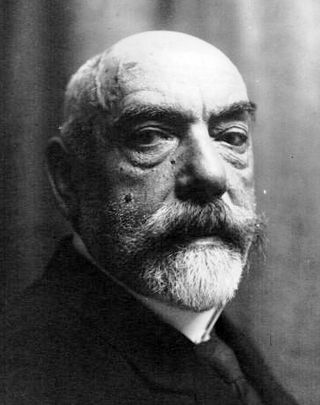
The Musée d'Orsay is a museum in Paris, France, on the Left Bank of the Seine. It is housed in the former Gare d'Orsay, a Beaux-Arts railway station built between 1898 and 1900. The museum holds mainly French art dating from 1848 to 1914, including paintings, sculptures, furniture, and photography. It houses the largest collection of Impressionist and post-Impressionist masterpieces in the world, by painters including Berthe Morisot, Claude Monet, Édouard Manet, Degas, Renoir, Cézanne, Seurat, Sisley, Gauguin, and van Gogh. Many of these works were held at the Galerie nationale du Jeu de Paume prior to the museum's opening in 1986. It is one of the largest art museums in Europe.
The following is an overview of the events of 1896 in film, including a list of films released and notable births.

Maximilien Luce was a prolific French Neo-impressionist artist, known for his paintings, graphic art, and his anarchist activism. Starting as a wood-engraver, he then concentrated on painting, first as an Impressionist, then as a Pointillist, and finally returning to Impressionism.

Pierre Lanith Petit was a French photographer. He is sometimes credited as Pierre Lamy Petit.

Le Coucher de la Mariée, Bedtime for the Bride or The Bridegroom's Dilemma is a French erotic short film considered to be one of the first erotic films made. The film was first screened in Paris in November 1896, within a year of the first public screening of a projected motion picture. The film was produced by Eugène Pirou and directed by Albert Kirchner under the pseudonym "Léar".

Jules-Félix Coutan was a French sculptor and educator.

Alexandre Bigot was a French ceramicist. He was primarily a ceramics manufacturer, producing the designs of many artists and architects of the French-Belgian Art Nouveau movement, including: Jules Lavirotte, Hector Guimard, Louis Majorelle, Henri Sauvage, Henry van de Velde, Auguste Perret, Andre Arfvidson, Anatole de Baudot and more.

The Temptation of Saint Anthony is an 1898 French silent trick film by Georges Méliès. The film, featuring Méliès and his frequent collaborator Jehanne d'Alcy, is a version of the traditional artistic subject of the temptation of Saint Anthony, showing Anthony the Great's faith and chastity tested by visions.

Clément Maurice was a French photographer, film director, and producer.
Albert Kirchner (1860–1902), better known under the pseudonym Léar, was a French photographer, manufacturer, exhibitor, and filmmaker who is noted for producing several religious and erotic films. He was employed by Eugène Pirou, a French filmmaker and photographer. Kirchner directed the first known erotic film, 1896 Le coucher de la mariée, that featured actress Louise Willy.

After the Ball is an 1897 French short silent film made by Georges Méliès. It was sold by Méliès's Star Film Company and numbered 128 in its catalogues.

Jules Girardet was a French painter and illustrator of Swiss ancestry.
Denis Albert Bardou was a French manufacturer of precision optical instruments.

Franz Meerts or Frans Meerts was a Belgian painter and aquarellist known for his interior scenes, genre scenes, still lifes and landscapes. He was also active as an author, publisher and copyist.

Alfred Verhaeren was a Belgian painter known for his portraits, interior scenes, architectural paintings and still lifes. He participated in the second wave of Belgian Realism and was later influenced by Impressionism.

Otto Wegener was a Swedish-born French portrait photographer.
The Bridegroom's Dilemma was an 1899 French short silent comedy film by Georges Méliès. It was sold by Méliès's Star Film Company and is numbered 177–178 in its catalogues, where it is advertised as a scène comique.

















